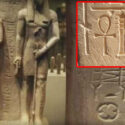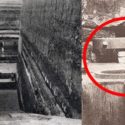NASA Photo of Alien Spaceship Crashed On Mars Has a Mysterious Background
NASA’s Mars Reconnaissance Orbiter took the most recent and widely discussed snapshot from the Red Planet in December of 2006. An anomaly hunter from South Africa, Jean Ward, spotted unusual peculiarities on the surface of Mars when looking at the photo. Even though the image is almost 15 years old, the researcher’s new inspection of it revealed a strange scene that had been hidden in plain sight for all these years.
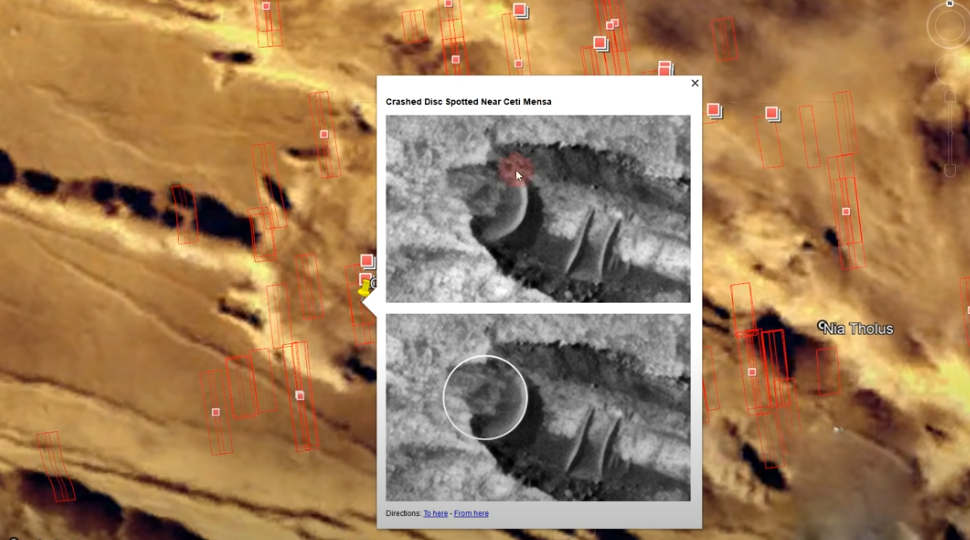
Hundreds of images of Mars have been taken, many of which exhibit excellent inexplicable abnormalities. However, this photo features an eye-catching object in the form of a disc. The object’s diameter is estimated to be between 40 and 50 ft. A superstructure in the shape of a triangle can be seen from above in the upper part, from beneath the Martian soil that covered its front leg.
“Here I showcase an oddity I uncovered at a new point in Ceti Mensa in the region Valles Marineris,” Ward writes on his blog. The anomaly appears to be a disc-shaped object that collided with Mars’ surface at a low angle and left a trench behind it. The disc-shaped object has a diameter of about 12 to 15 meters. Apart from deleting a few dunes to emphasize the thing, I didn’t make any other changes to the image.”
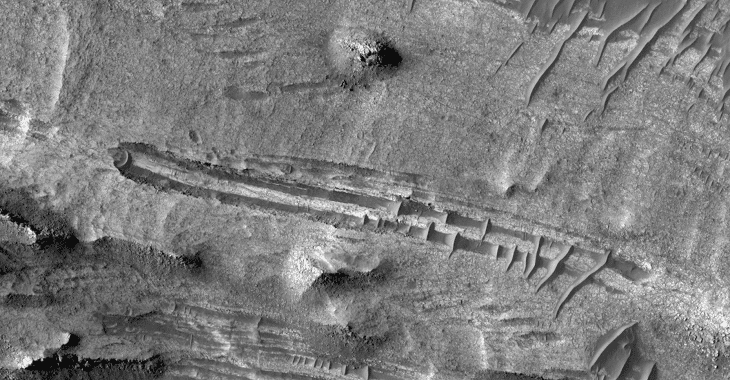
Ward hypothesized that the anomaly was a disc-shaped ship that “struck the surface of Mars at a shallow angle.” Alternatively, he speculated that the unusual streak behind the strange form could be “a slope going into an underground entrance.”
There are several of them, which allow certain conclusions to be drawn, such as: after the collapse of a ship’s ditch dug into the Martian surface during a fall or rather a forced landing, as evidenced by the gentle trajectory along which this ship landed, plowing an impressive distance and depth of the trail left.
The ditch left after landing began to fill up with dunes in the first frame, but the second photo indicates that half of the trench has been cleared of these dunes. This raises the possibility that the spaceship crew survived and took steps to repair the ship and clear some ditches in preparation for takeoff.
This photograph, which displays impressive strata exposed on the floor of Candor Chasma, a vast canyon in the Valles Marineris region, was put on the NASA mission’s official website with an anomaly.
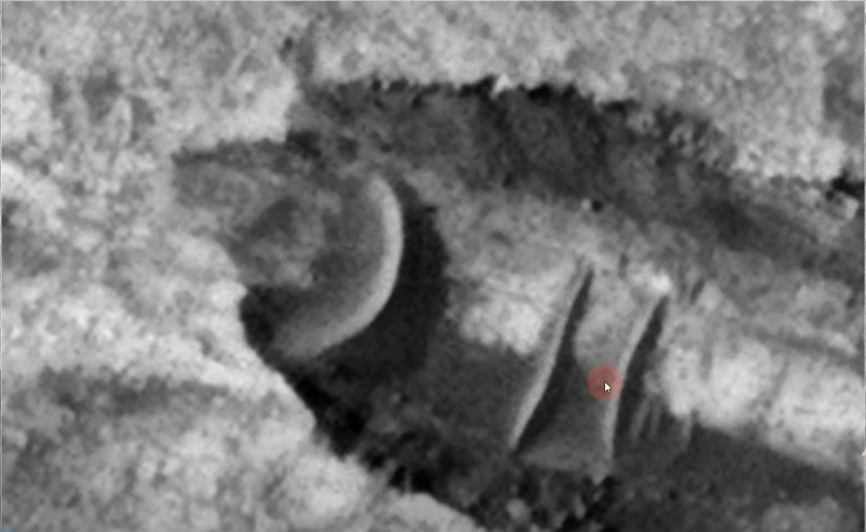
“The floor here is approximately 4 kilometers below the canyon rim,” NASA researcher Chris Okubo noted. The strata are made up of sand and dust particles that have been carried here by wind or water. These sedimentary layers may have filled the canyon to the rim before being worn away, most likely by the wind. Because of changes in the size of the sedimentary particles, chemical alteration, or both, the long hills may signify more robust rock sections.
The beautiful swirls that these layers form are one of the most eye-catching characteristics of this landscape. Sedimentary rock comprises horizontal layers in most cases. On the other hand, these layers have been folded into the current patterns. Folding of the visible layers may have happened due to the weight of overlying sediments.
Because these strata may have collected in shallow lakes and undergone chemical reactions with this water, understanding the geologic history of this location may reveal clues regarding the history of water on Mars. The presence of certain types of chemical reactions between water and rock can generate energy that could have kept these locations livable.”
All of the delicate swirls of pebbles and indicators that Martian seas once splashed here have been spotted by NASA, but an anomaly that has fallen in the vicinity has gone unnoticed. However, if someone closely examines the photograph taken, it is difficult not to see it.
While either of Ward’s incredible scenarios would be great news to UFO enthusiasts who believe Mars was previously home to a race of intelligent extraterrestrials, skeptic onlookers have a different perspective on the anomaly discovered on the Red Planet’s surface. They contend that the peculiarity is more likely to trick light and shadow than a crashed flying saucer or a secret way into a subterranean alien headquarters.


